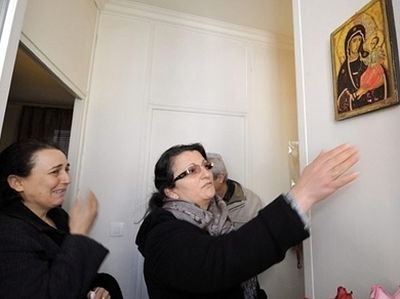Suzdal (a historic ancient town in the Vladimir region, Russia), March 4, 2015
“An icon of the Mother of God of the Byzantine period, which a family from Turkey obtained in Antakya (Antioch) and took with them to Paris has started weeping,” writes the Greek website Romfea. According to the Altindagoglous, the icon was given to them in 2006 by a Greek monk in Libya. People from different countries are coming to pray before the wonderworking icon. People in Russia have heard of it as well.
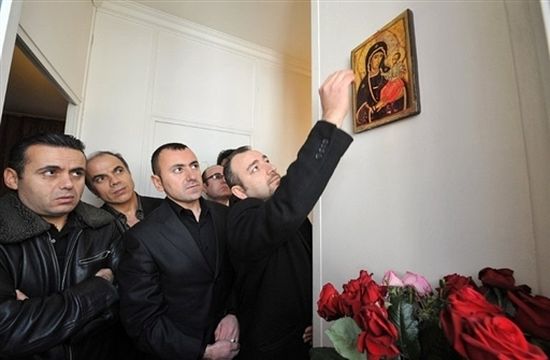
But one look at the wonderworking icon is enough to recognize it at once: this is a photocopy of a great icon of the Holy Protection Convent in the town of Suzdal! And it is precisely a photocopy, not a hand-painted copy. A hand-painted copy cannot so exactly resemble the original as a photograph.
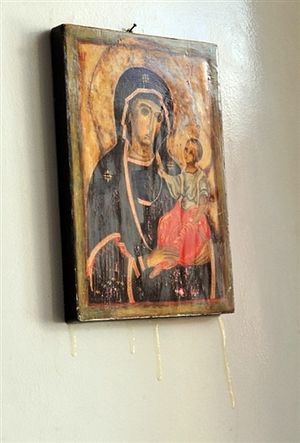
The holy icon is kept at the Tretyakov Gallery and dates back to the 1360s. The inventory of the Holy Protection Convent in Suzdal for 1597 describes in detail the precious gifts associated with this icon “of the Most Pure Virgin” with 225 items donated as tokens of gratitude for miracles.
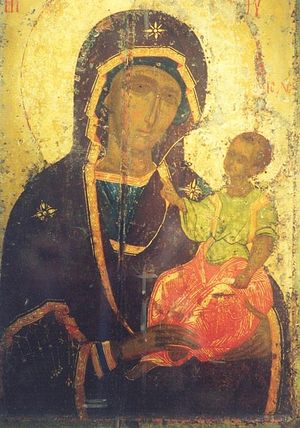 Icon of Suzdal Pokrovsky Monastery
Icon of Suzdal Pokrovsky Monastery
He turned back and promised to place his favorite icon in the convent should the words of the abbess come true. Having seized Kazan on the feast of the Protecting Veil of the Mother of God, on his way back the Tsar fulfilled his promise, adorning the icon by suspending from the crown of the Queen of Heaven a pair of gold earrings with pearl, turquoise and cornelians which had belonged to the Tsarina of Kazan.
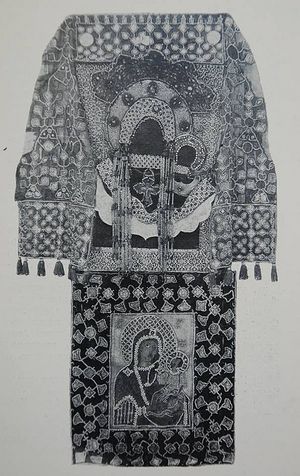
The Holy Protection Convent became a place where many distinguished persons took monastic vows, labored in asceticism and reposed; these included the spouse of Grant Prince Vasily III Solomonia Saburova (St. Sophia of Suzdal), one of the spouses of Tsar Ivan IV, Tsarina Anna, the spouse of Vasily Shuyskiy Tsarina Ekaterina, the spouse of Emperor Peter I, Eudoxia Lopukhina. It also became a destination for pilgrimages to the wonderworking icon, a place of consolation. By 1910, as we can see from a photograph by V. Georgiyevsky, the image on the icon of the Mother of God had become almost invisible. And in 1920 one of the most outstanding restorers of his age, a favorite of the Holy Patriarch Tikhon, G.O. Chirikov, carefully cleaned the icon from a layer of darkened oil and an image painted over it in the seventeenth century. The fact is that the adornments added to the icon made its veneration by the faithful impossible—venerated only the hanging veil. The eyes of the icon can barely be seen. Only the pupils can be seen, the eyes have disappeared in tears, they have been “cried out.” That is why She has consoled and is still consoling. And the Mother of God is again “weeping” in Paris.


